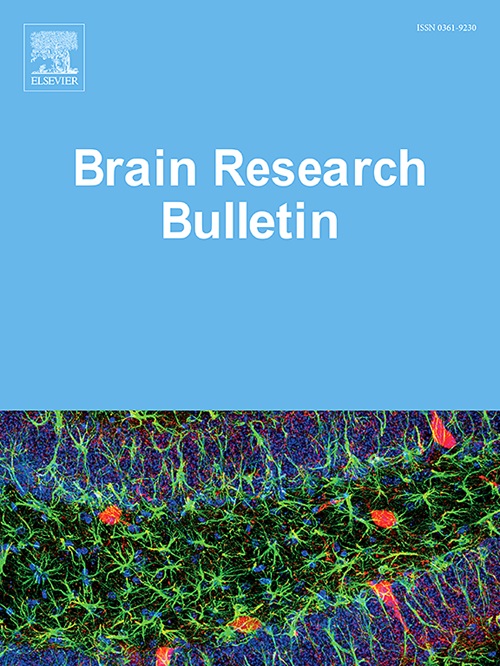The mirror preference test: A reverse translational approach to study anomalous subjective experience in rats
IF 3.5
3区 医学
Q2 NEUROSCIENCES
引用次数: 0
Abstract
Significant advancements have been made in the treatment of psychotic disorders, yet current pharmacotherapy remains inadequate. Symptoms related to the misinterpretation of reality are crucial for diagnosis but pose challenges for preclinical research. In humans, a Mirror-Gazing test is used to examine abnormal self-experience and to predict the risk of schizophrenia. To address this, we developed a task to evaluate anomalous subjective experiences in rats using a Mirror-Preference test. Here we demonstrate that naive rats show a preference for a mirror chamber, which was followed by significant habituation over a series of trials. In subsequent tests, we utilized dimmed lighting and net-covered mirrors to induce incomplete mirror images. Acute stimulation with amphetamine (AMPH, 3 mg/kg, i.p.) further increased the preference for the mirror. In a model of psychosis induced by chronic AMPH administration, rats showed fewer and shorter interactions with the mirror but maintained their preference for the chamber where psychotic-like animals were given additional AMPH stimulation (1.5 mg/kg, i.p.) before testing. Here, a surprising reversal in chamber preference was observed, along with decreased frequency and duration of mirror contact, suggesting mirror avoidance. The AMPH-presensitized rats also exhibited hyperlocomotion and elevated anxiety, indicative of psychotic-like behaviour. Although self-recognition in rodents is debatable, recent studies suggest they can discriminate mirror images. We propose that limited visual perception that meets brain monoamine sensitization may trigger visual illusions as part of a psychotic-like state in rats. This novel approach can be utilized to test intervention strategies for psychosis in rats.
求助全文
约1分钟内获得全文
求助全文
来源期刊

Brain Research Bulletin
医学-神经科学
CiteScore
6.90
自引率
2.60%
发文量
253
审稿时长
67 days
期刊介绍:
The Brain Research Bulletin (BRB) aims to publish novel work that advances our knowledge of molecular and cellular mechanisms that underlie neural network properties associated with behavior, cognition and other brain functions during neurodevelopment and in the adult. Although clinical research is out of the Journal''s scope, the BRB also aims to publish translation research that provides insight into biological mechanisms and processes associated with neurodegeneration mechanisms, neurological diseases and neuropsychiatric disorders. The Journal is especially interested in research using novel methodologies, such as optogenetics, multielectrode array recordings and life imaging in wild-type and genetically-modified animal models, with the goal to advance our understanding of how neurons, glia and networks function in vivo.
 求助内容:
求助内容: 应助结果提醒方式:
应助结果提醒方式:


